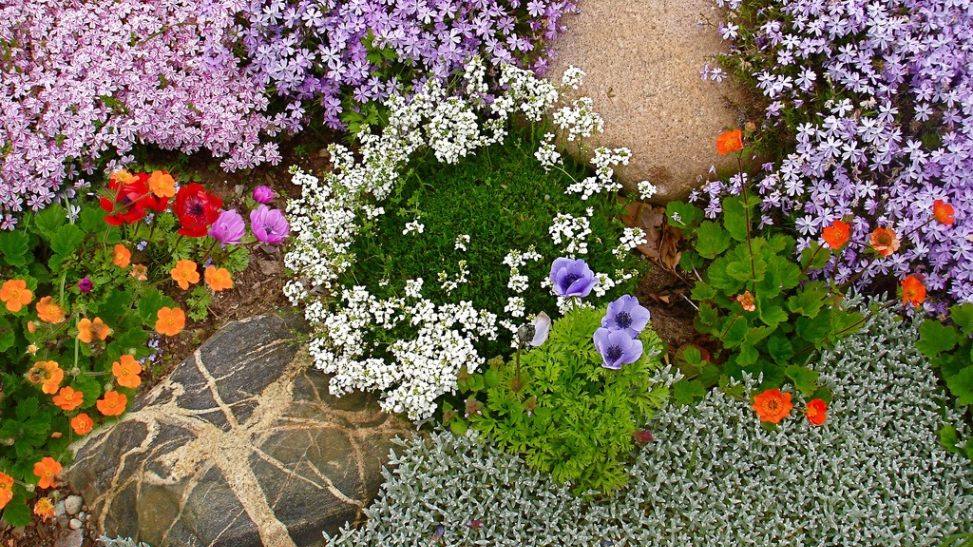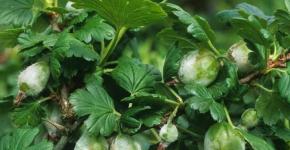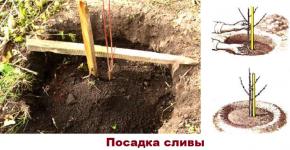How to grow arabis alpine from seeds
All flower growers dream of making their flowerbed original and beautiful, a real decoration of the backyard. Alpine arabis is perfect for this purpose - a perennial plant with silvery leaves and a white cap of flowers. It does not need special care conditions, it spreads quickly and does not require annual sowing.
plant description
Alpine Arabis (Arabis) is a member of the Cruciferous family. This is a perennial plant with a developed root system. Common on rocky soil, hills and slopes.
When touching the ground, it quickly takes out thin roots. Stems creeping, climbing, can reach a height of 25-30 cm. The leaves are densely pubescent with villi, medium-sized, tightly adjacent to the stem. They have a silvery-white or grayish color, heart-shaped, oblong shape. Basal leaves grow not so densely, have an oval shape and are collected in a rosette.
Arabis alpine gives abundant flowering in early April and continues until mid-June. The flowers are white, bright pink, up to 2 cm in diameter. In cool spring, the flowering period is up to 8 weeks. It has a sweet aroma, honey plant. By mid-July, fruits appear - brown pods containing seeds for further reproduction.
They are also propagated by cuttings and division of bushes. Does not tolerate dampness and windiness. Thanks to its rapid growth, it has earned popularity from South America to the expanses of Europe and Asia.
Variety and types
There are over 100 varieties of arabis. Alpine and Caucasian species are the most widespread. Alpine rezuha, as Arabis alpina is also called, perfectly complements compositions in flower beds. Its use on alpine slides or rockeries will give your garden originality. It has several varieties of decorative forms.
(Var. rosea variety)
A perennial plant that blooms in small pink racemose inflorescences that reach 12 cm. It goes well with other flower varieties, can be planted as an addition to a flower arrangement, or as an independent planting. The flowering period is 30-40 days.
(Var. florе-pleno variety)
It is very similar to the original form, but its inflorescences resemble levkoy - they are just as large. Gives flowers of medium diameter - up to 2 cm. It blooms from mid-May to early July.
(Cultivar F.schneehaube)
One of the early flowering varieties - gives the first flowers in mid-April. They are white, about 1.5 cm in diameter, collected in brushes up to 15 cm long. Plant height 15-20 cm.
How arabis alpine reproduces
Propagation occurs by seeds, division of the bush or cuttings. Bushes are divided when many roots have formed - in early spring or late August. The optimal age for division is 4 years. Such a plant can be divided into 20 daughter bushes.
Seed ripening occurs from the end of June. When sowing them, it should be borne in mind that seedlings will only be in a year. This procedure is carried out in winter or spring, blowing up small rows - no more than 20 cm deep - and sowing seeds in them.
If you choose the method of cuttings - from May to June they are transplanted directly into the ground. For better rooting of the cutting, the bottom leaf is separated so as to expose the cambial layer, which is the basis for the root system. Basically, this method is used for terry arabis varieties that do not produce seeds. Cuttings are also used for seedlings, but the plant is unpretentious and takes root well immediately in the soil.
Arabis alpine tolerates winter weather well, it is enough just to make a cover of polyethylene. Frost-resistant varieties have already been bred that do not require shelters.
Conditions for growth and flowering
Arabis alpine is planted in a sunny open place. This makes it possible to obtain more lush and compact cushions of flowers. Some varieties, especially variegated species, prefer to grow in partial shade.
The soil should be loose, mixed with sand, well-drained. Excess moisture and abundant watering does not tolerate well, so waterlogging is undesirable and can lead to the death of the plant. It is recommended to water only when the soil is completely dry during the dry period. Fertilizer with humus is welcome to ensure active growth and more inflorescences.
After flowering, the stems are cut, which allows you to save the shape of the bush. A haircut guarantees even more flowering of the alpine rezuha next year.
Regular weeding is carried out - due to the rapid growth of the root system, the flower can slow down the growth of neighboring plants.
Neighborhood with crocuses and daffodils will be favorable - they perfectly complement each other. The combination with bright tulips is especially impressive. Arabis is planted directly above the bulbs. They are used to surround rose bushes, trees, shrubs - to create a background around them.
Arabis alpine: growing from seeds
Perennial arabis alpine plant unpretentious. Reproduction by seeds will not cause any problems to the gardener, and the results obtained will please the eye for more than one season. With a minimum of effort, you will get excellent planting material for your flower bed or alpine slide.
Alpine Arabis: planting and care
Sow seeds in wooden or plastic boxes in early spring or late autumn, the optimal months for this are April and October. Soil temperature should be around 20 degrees Celsius. If it's outdoor soil, let it stand at room temperature to warm up. It can be mixed with sand or small stones to keep the soil well-drained and breathable.
The seeds are not driven hard, to a depth of 0.5 cm. They are covered with polyethylene or any non-woven material from above.
Watering is provided moderately, if necessary, when the soil dries out. It is necessary to ensure that it is uniform, does not erode the soil. Water stagnation should be avoided. The first shoots should appear on the 19-24th day after sowing. At this time, watering should be limited to avoid the appearance of mold and fungus, which will lead to the death of sprouts.
Yulia Petrichenko, expert
Seedlings dive. They should be grown separately, at a distance of at least 30 cm from each other - then you can get ready-made bushes for planting. If you want to use arabis as a ground cover, the distance between shoots does not matter.
Transplanting seedlings in open ground
Arabis alpine is transplanted into open ground after the appearance of the third leaflet on the shoot. Then the seedling is more likely not to die. Watered bushes are planted without removing a lump of earth from the roots.
Planting seedlings in open ground should be carried out at the beginning of May. If there are still slight frosts at this time, cover the sprouts with a film for 1-2 weeks. The soil before planting is cleared of weeds and overgrowth. This is required only when planting seedlings, over time it will grow and crowd out useless plants. After planting, fertilizing with mineral fertilizer is carried out so that the plant blooms for a long time and profusely.

Arabis alpine care
There are no special requirements for the care of Arabis. Adhere to only a few elementary recommendations and you will be duly rewarded with the beauty of its flowering. Create optimal conditions for its growth, and your further participation in development will be minimal.
- Plant only in well loosened soil. Add turf, sand, small stone to ordinary garden soil. It must freely pass air to the root system of the plant.
- Choose an open area for planting. It should be well lit and warmed by the sun. Only some varieties tolerate penumbra, in others it can cause growth inhibition and limited flowering. Protect the plant from drafts.
- Alpine rezuha tolerates drought better than waterlogging. It does not require additional watering if the weather is cloudy and rainy.
- Cut back the plant in autumn, leaving about 3-4 cm from the ground. This will ensure more abundant flowering next year and will protect the arabis from freezing.
Alpine arabis disease control
Alpine rezuha is practically not susceptible to diseases and pests. The only factor leading to the death of the plant is the development of mold and rotting with excessive watering, if this happens, the plant is transplanted to another place.
Is there an arabis alpine in your backyard? What measures do you use to grow and plant it? Looking forward to your advice and comments!


